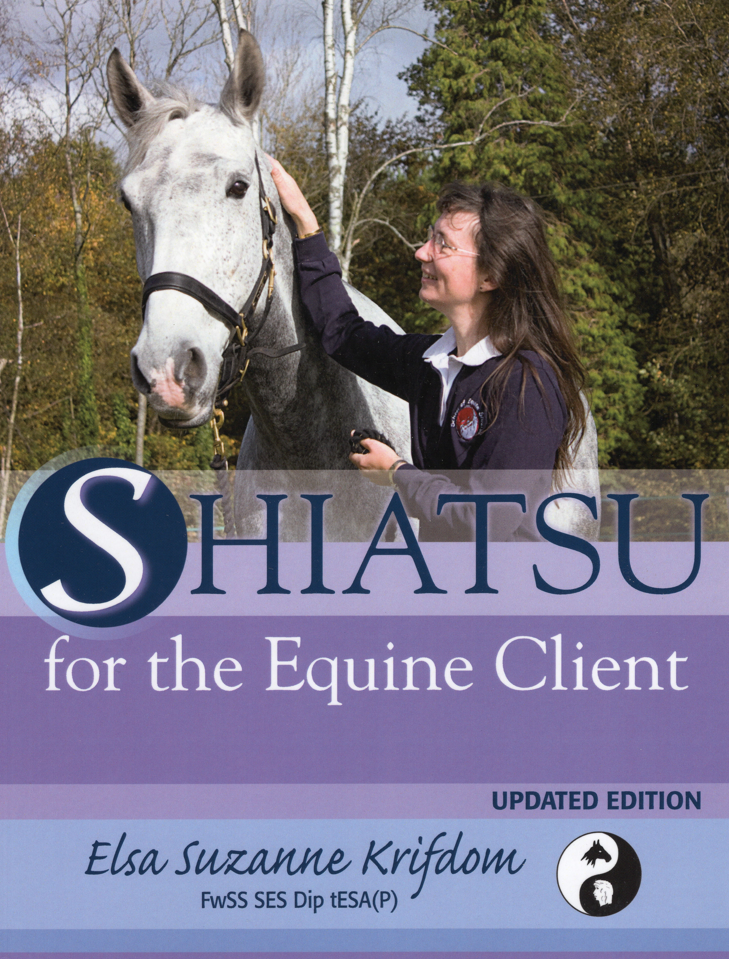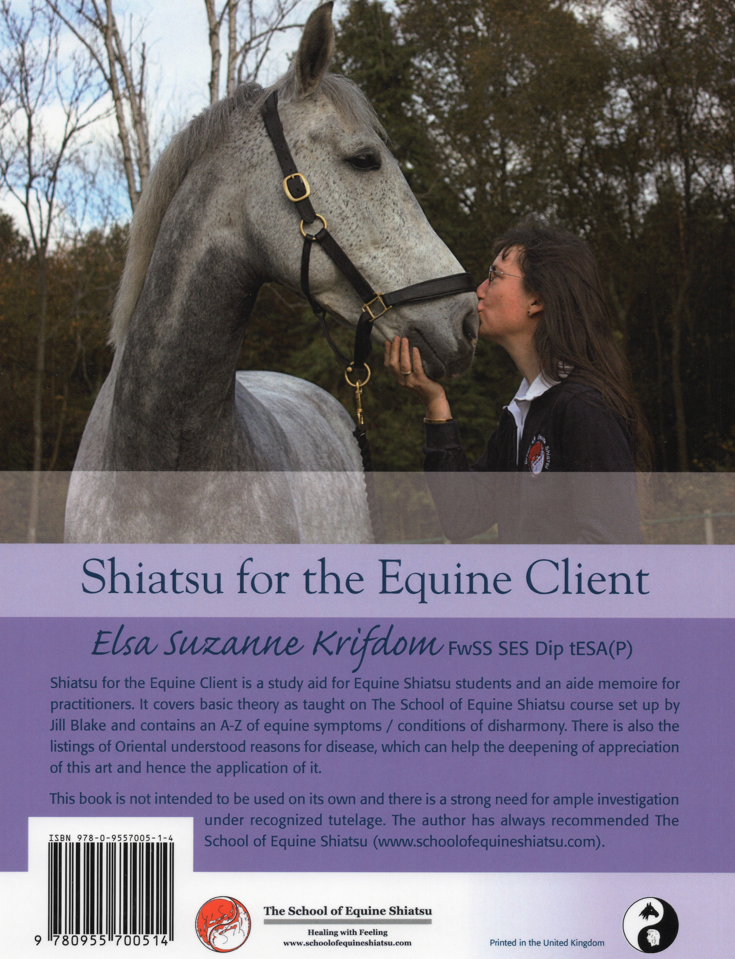Having had a love of horses since childhood I was stopped with a sudden emotional response to an advert in the Shiatsu Society Journal back in the August of 2005. The advert was for a Practitioner’s training course in Equine Shiatsu with Jill Blake of the School of Equine Shiatsu. I started in the September and gained the 2 ½ year Diploma in 2008.
A little bit about Equine Shiatsu and Elsa
The practice of Equine Shiatsu is as profound and meaningful for horses as it is for us humans. The energy channel system, with its numerous acupoints (Tsubos) is translated onto the horse and accessed with similar techniques.
Although there can be no verbal communication, the owner or stable hand can give vital information about the client and the rest is done by feel. The horse (pony, donkey or other equine!) can be very clear about what it wants to tolerate!
The relationship between practitioner and horse is built on trust, understanding and respect and is non-demanding. The practitioner does not expect anything from the horse other than spending time together being close. This communing is relaxing and reassuring in nature, which in itself can enhance a sense of well-being. The benefits of Shiatsu can, therefore, include relaxation of mind and body so easing tension and stiffness. It can improve breathing, circulation, posture, alignment, emotions and behaviour.
These benefits may only be felt personally, be augmented by repeated weekly meetings then maintained with longer time gaps between sessions. Due to the quiet nature of the horse I realised that I needed to understand its communication more, to read its conscious physical cues as well as its energetic ones. I undertook Sue Gardner’s the Applied Equine Behaviour course, gaining my certificate in 2015.
This enabled me to be guided much more by the horse during the Shiatsu sessions, resulting in more choice being afforded to the animal, for example, where the session takes place, in a stall or stable, tied up or loose, outside, again tied up or loose, on the yard, in the school, a small paddock or even in the field.
A brief overview of what to expect from a session:
If you are interested in finding out more or booking a session, please click the button bellow to contact Elsa.
book an session nowsession length
The length of the hands-on (or hands-off) session depends very much on the individual and on each time of meeting. It can last anything from some 10 minutes to just over the hour, although, usually the contact time is about 45 minutes.
preperation
A case history needs to be taken prior to the first session and signed by the animal’s owner or representative, which includes that the Vet is aware and happy for the session to proceed. There may be a need for the horse to be walked, trotted-up or lunged.
I have even worked on a horse in the school with the owner riding off and coming back to me for more Shiatsu!
on the day
All sessions will be easier and of more benefit if the horse is clean and dry, if possible there needs to be time either side of a Shiatsu before a hard feed is given and, hopefully, the animal can be given the rest of the day off to relax after the session.
following the session
One amazing thing about Shiatsu is that it continues to ‘work’ after the practitioner has left and can sometimes last, subtly, for several days. There may not be a dramatic change noticeable, but rest assured that the deep relaxation experienced will be beneficial to the recipient. That is, after all, what we wish: the very best for our four-legged friends.
Such is my passion to have more people treat their horses with this level of care that I am now the senior teacher for the School of Equine Shiatsu and the author of one of the course books: Shiatsu for the Equine Client.
The School of Equine Shiatsu
